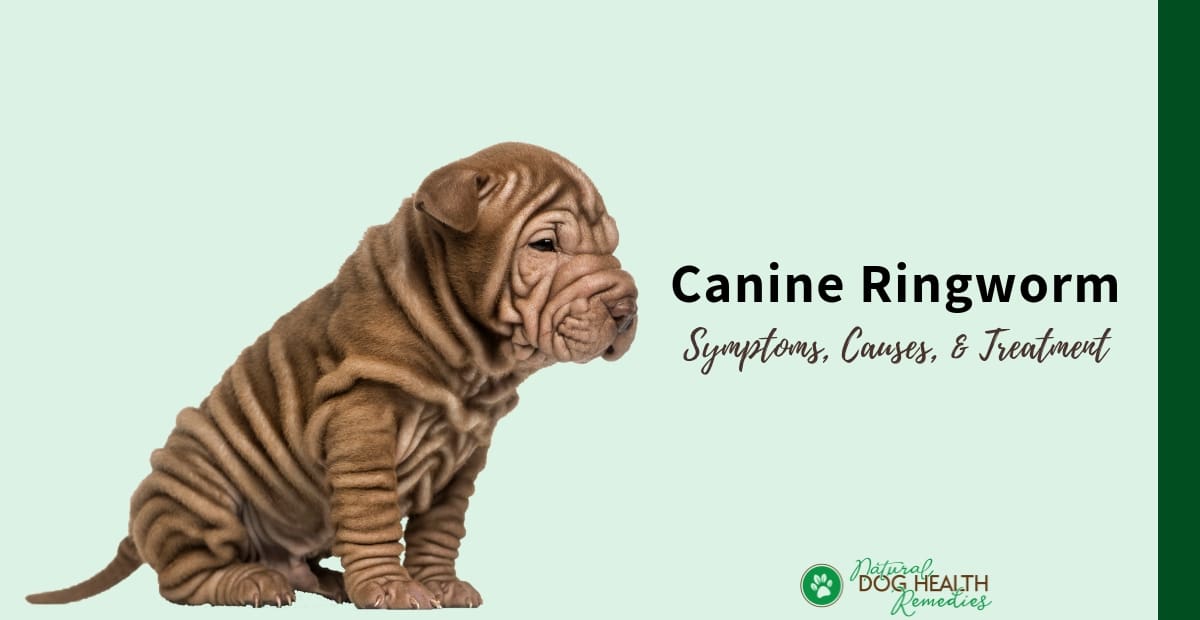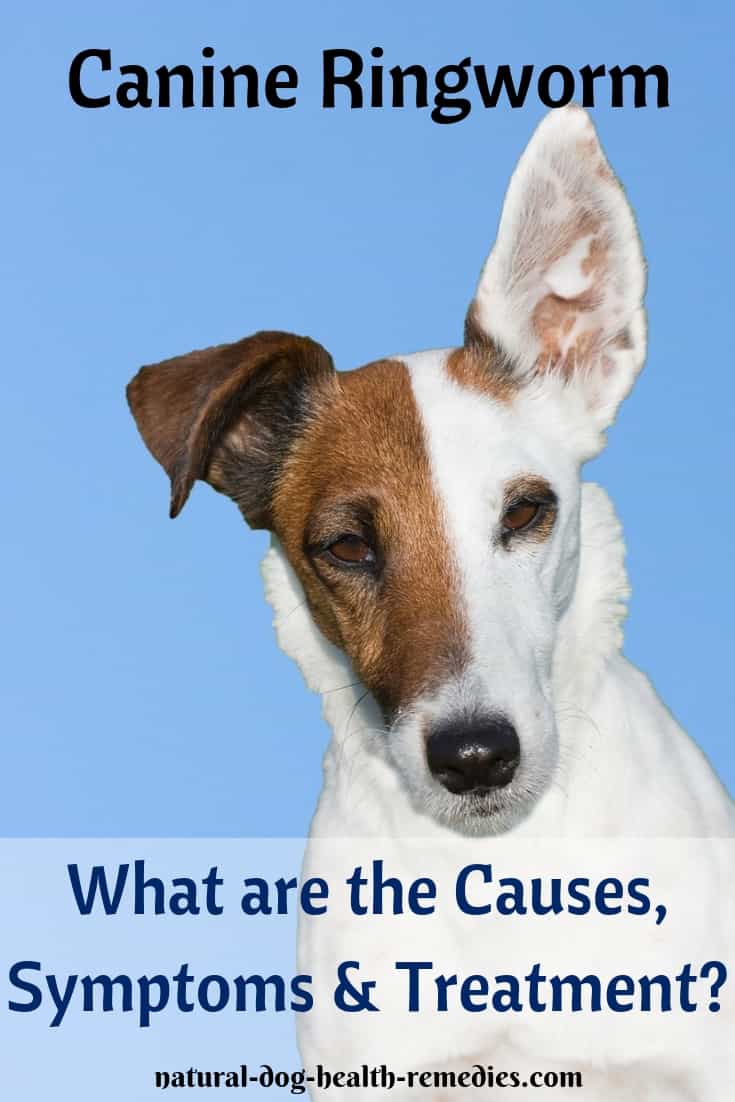Canine Ringworm

Overview
Despite the name, ringworm does not involve any "worm". Ringworm is in fact a fungus that lives in the outer layers of the skin, nails, and hair.
Like all fungi, the ringworm fungus proliferates in climates that are hot and humid, and you may think that ringworm infections most likely occur in the hot summer days. Contrary to general belief, however, ringworm infections actually happen more often in autumn and winter!
Is Canine Ringworm Contagious to People?
Ringworm is highly contagious and can infect dogs, cats and humans.
If you have a dog with ringworm, be sure to use extreme care when handling and treating your dog. Do not allow any children to handle any pets with ringworm.
Also, due to the possibility of contagion, if you suspect that your dog has ringworm, get your dog to the vet for a proper diagnosis.
How is Ringworm Transmitted?
Ringworm is trasmitted by spores that are present in the air, the soil, and by direct contact with the infected hair of pets and people.
The spores are hardy and can survive in the environment for about 18 months.
If your dog is infected with the fungus, spores from his hair can be shed into the living environment (e.g. furniture, bedding, etc.). Moreover, the spores can attach to grooming tools and toys.
Which Species of Ringworm Can Infect Dogs?
There are several species of the ringworm fungi which can infect either you or your pet.
Most cases of canine ringworm infection are caused by either Microsporum canis, Microsporum gypseum, or Trichophyton mentagrophytes.
Canine ringworm is, fortunately, not as common as other skin diseases.
Symptoms of Canine Ringworm
How do you know if your dog has ringworm?
The most typical ringworm symptoms are skin lesions and hair loss.
As the ringworm fungi live in hair follicles, they cause the hair shafts to break off at the skin line, resulting in patches of hair loss that are spreading outward, usually with skin lesions.
The lesions often have dry scaly and crusty skin in the "ring" center. These lesions, which may or may be itchy, usually start out small and round, but can keep growing in size.
As you can see, these symptoms mimick a number of other skin conditions, such as mange and other allergic conditions. So to be certain that your dog does have ringworm, it is important to get the dog to a vet for a proper diagnosis.
How is Ringworm Diagnosed?
A common diagnosis is to use a special black light called Wood's lamp to look for the fluorescence of infected hairs. But not all species of the ringworm fungi fluoresce.
Moreover, spores may be found even on the haircoat of a healthy unaffected dog.
Another way and probably the most accurate diagnosis is to collect some dry scales and lesion crusts from the skin and coat and perform a culture.
The shortcoming of this method is that it may take up to 2-3 weeks for the culture to become positive.
How is Ringworm Treated?
 Ringworm may be either a local infection affecting small areas (usually the head, but can also occur on the legs, feet, or tail), or more severe or generalized infections - evidence of the dog's systemic weakness.
Ringworm may be either a local infection affecting small areas (usually the head, but can also occur on the legs, feet, or tail), or more severe or generalized infections - evidence of the dog's systemic weakness.
For local infections, an antifungal ointment is usually used to treat the lesions two times per day, for several weeks to even several months. You may need to shave the hair from the affected areas before applying the ointment.
For more serious or generalized infections, in addition to the topical treatment, antifungal shampoos or even dips will also be used.
Your vet may suggest bathing your dog with the antifungal shampoo at least two times a week, before using the dip.
In addition, oral antifungal medications will be prescribed.
Griseofulvin used to be the most commonly prescribed drug for ringworm. However, this drug could cause potential side effects, such as:
- vomiting if given on an empty stomach;
- diarrhea;
- birth defects (therefore should not be used on pregnant animals);
- bone marrow suppression (rare but potentially fatal).
For this reason, recently newer drugs with fewer side effects, such as itraconazole or terbinafine (Lamasil), are prescribed.
Drug therapy should continue for at least 6 weeks to completely eradicate the fungus. If discontinued too soon, the infection will recur.
How Long is Ringworm Contagious in Dogs?
Don't think that since your dog is being treated, he is not contagious anymore.
Dogs undergoing treatment are still contagious - They remain contagious for around 3 weeks.
So even when your dog is being treated, you still need to take precautions and isolate your dog as much as possible from other pets and family members.
If the dog is not receiving any treatment at all, he will be contagious for a much longer period of time.
Canine Ringworm Home Remedies
If your dog has a mild case of localized ringworm infection, and you prefer not to subject the dog to the harsh conventional treatment, try these Natural Ringworm Home Remedies.

Eldredge, et al. Dog Owner's Home Veterinary Handbook 4th edition (Wiley Publishing, 2007).
C.J. Puotinen, Natural Remedies for Dogs and Cats (Keats Publishing, 1999).
M. Goldstein, The Nature of Animal Healing (Ballantine Books, 2000).
R.H. Pitcairn, The Complete Guide to Natural Health for Dogs and Cats (Rodale, 2005).





